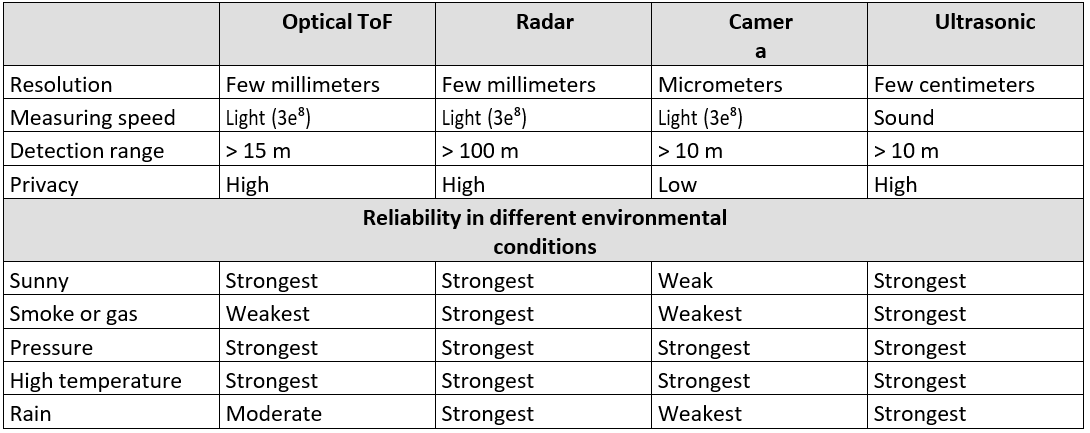Proximity Sensing’s Role in Enabling Emerging Markets
Technical Analysis | 04-07-2024 | By Bhavin Kharadi
Technical article written by Bhavin Kharadi, Industrial Marketing Manager, Texas Instruments.

Proximity sensors have enabled autonomy and automation, safe operation, and energy efficiency in emerging markets such as audio beamforming and surgical robotics.
Proximity sensors are so prevalent in system designs that the question is less often, “Do I need a proximity sensor,” and more often which type best meets a design’s objectives. When developing new technologies, the right solution is not always intuitive. It’s important to consider your specifications, particularly the end-equipment features, to determine which sensing technology to use for your system designs.
Autonomy and automation
People counting, fall detection and obstacle avoidance are primary use cases for proximity sensors. People counting has revolutionised retail analytics, making it possible to measure a store’s foot traffic without a camera and alleviating privacy concerns for customers. Vacuum robots can detect their environment to avoid falling down stairs, while drone navigation systems using obstacle avoidance can maneuver around trees and avoid power lines and other barriers from a range of 50 m.
For applications requiring autonomy and automation, the most important factors are range and field of view, but these factors come with a trade-off between them. A wider field of view typically means a shorter sensing distance or range, which is useful for detecting behavior such as someone approaching a video doorbell. The converse is also true; a narrower field of view often means a longer sensing range, which is advantageous in applications such as drones, which need to slow down in time to land safely. Different modes of proximity sensing will dictate the range and field of view. Radio frequency (RF) waves (radar) have a detection range of 0.04 m to over 100 m and a field of view of 160 degrees, while near-infrared wavelengths (optical time of flight [ToF]) have a detection range of 0.01 m to 20 m and a field of view of 0.15 degrees to 120 degrees.
Given the variation in the detection range and field-of-view requirements for emerging autonomous and automated applications, TI proximity solutions offer a range of options; you can reach distances of over 100 m with our IWR6843 millimetre-wave (mmWave) sensor and fields of view upwards of 120 degrees with our OPT3101 analog front end.
Safe Operation
Hand in hand with autonomy and automation, proximity sensors empower safe operation. In applications such as advanced driver assistance systems and industrial robotics, proximity sensors provide adaptive and predictive safety measures for contactless operation. They monitor high-risk areas and blind spots in factories or send signals to stop a vehicle before it hits a pedestrian, in accordance with the International Electrotechnical Commission 61496-5 standard. TI’s 77-GHz AWR2544 radar sensors enable range detection to 200 m or more, with a higher range resolution that improves the performance of corner radar applications to help increase vehicle safety.
Measuring speed and sensing resolution play a crucial role in scenarios such as fast-moving assembly lines or surgical procedures. Table 1 highlights a few of the differences between proximity sensing solutions, and how they perform in various environmental conditioTable 1. Performance of proximity sensing solutions.

Table 1. Performance of proximity sensing solutions
Energy efficiency
Audio beamforming is a trend enabled by proximity sensors that allows TVs, soundbars, smart speakers and similar applications to direct audio toward a person at a range of 6 m to 8 m, improving the user-experience through optimal hearing. Similarly, the implementation of our IWRL6432 mmWave radar sensor in a heating, ventilation and air-conditioning system can help steer air toward a person, reducing energy consumption. These methods of intelligent steering are made possible through capabilities such as monitoring multiple zones for localising presence and tracking movement through each zone. Specifically, a 60-GHz radar sensor’s shorter wavelengths and higher number of transmit and receive antennas enable it to accurately detect the presence, motion and location of four or more people in a room.
Proximity sensors also contribute to advances in sustainable building design by using human presence detection to save energy. Applications such as video doorbells, kiosks and automated doors can rest in a low-power mode and wait to act upon detection. A system’s ability to rest in low-power mode is an effective way to increase energy efficiency, which is especially important in battery-powered systems.
Conclusion
Each specific sensing solution provides differentiating factors. For example, TI’s IWR6843 and IWRL6432 radar solutions enable 4D (3D and velocity) detection at 100-m ranges, with a resolution of 4 cm and the ability to make decisions based on detection with a novel architecture RF and microcontroller integration in a single sensor. TI’s radar devices can also penetrate nonmetal materials such as drywall and plastic, so the sensor can be hidden for aesthetic reasons. Our OPT3101 analog front end is highly customisable, and includes multitarget and multichannel capability to determine not only the distance but the direction of a target.
A world with proximity sensors is more intelligent, efficient and user-friendly. A coffee machine could initiate the brewing process as you walk into the kitchen every morning, or your laptop screen could enter privacy mode as you walk away. Hand gesture detection could exist in every home with low-cost, battery-powered applications. Choosing the right proximity sensor is essential to enabling new markets and allows us to imagine a world with consistent innovations.
The original article can be found here.

